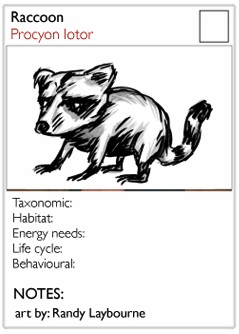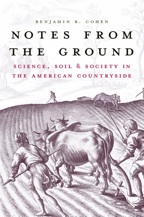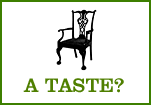If so, you should join this facebook group.
Here's part of what started this group: a friend of mine passed on this "letter to Santa:"

It quite nicely demonstrates an issue with advocates of biodiversity - that is, what can we do to get kids engaged with the wonderful creatures that are all around them? They obviously have the ability and the passion to care about such things, but it appears misplaced - they'll spend a ton of resources and time tracking down fictional things, when they could easily do the same with the very wildlife around them. As a bonus, if they do learn a little more about biodiversity, they will hopefully appreciate their surroundings a little more, not to mention the possibility of just being outside a little more.
In any event, this is why I'm please to share with you a project coming out of my lab, that will hopefully do a small part in tackling this challenge. And, with the help of a rather large group of young students, we have decided to call it the "Phylomon Project."
What is this? Well, the website describes it as follows:
...it's an online initiative aimed at creating a Pokemon card type resource but with real creatures on display in full "character design" wonder. Not only that - but we plan to have the scientific community weigh in to determine the content on such cards (note that the cards above are only a mock-up of what that content might be), as well as folks who love gaming to try and design interesting ways to use the cards. Then to top it all off, members of the teacher community will participate to see whether these cards have educational merit. Best of all, the hope is that this will all occur in a non-commercial-open-access-open-source-because-basically-this-is-good-for-you-your-children-and-your-planet sort of way.
Right now, we have plans to release the website proper in March 2010, but are in the process of getting general word out, as well as asking artists to begin participating through submissions of their artwork (this, you can start to see happening here)

The main idea is that it addresses the striking observation that children are really really really good at identifying Pokemon creatures, whereas they are really quite terrible at recognizing the plants and animals in their own proverbial backyards.
The study in question that showed this was even published a few years back in Science (Why Conservationists Should Heed Pokemon, Science. 2002 Mar 29;295(5564):2367), and its lead author, Andrew Balmford, has graciously allowed my lab to (so to speak) "have a go."
At the phylomon.org site, there is a link to a pdf which has a more fleshed out description of the aim of the project, but all in all, it is an exercise in web dynamics.
Consequently, we're well aware of the cautionary comments about the utility of such things. However. it is one of the luxuries of web projects, in that while the resources sunk in are relatively minor, the results can be quite amazing if the Gods of the Web are happy with what is going on.

The general idea is to have a web hub that can act as a focal point for a variety of different communities to weigh in. Essentially, we hope to have a community of illustrators who are keen (or at the very least, not opposed) to submit a piece of artwork (and at fairly small dimensions to try and guard against unwarranted use - i.e. we really only need a small image for the card aspect, 360 x 225px)
Secondly, we have folks from the scientific community who will be more or less in charge of trying to figure out what type of content is presented on the card. Here, I have quite a few folks lined up to get this ball rolling from a Vancouver, British Columbia perspective. This is where we hope the scientific literacy angle can come into play.
Thirdly, (and in tandem with what the science folks are doing), we'll have the gaming community weigh in. This is actually the group I have the least connection with, but from previous mentions about the project (I've blogged occasionally on the idea), they tended to be (by far!) the most vocal, so I'm optimistic that there will be some keen contributions there.
Overall - the project flowchart is:
1. we collect interesting images (that can hopefully engage both the artistic community and the children who will ultimately play with the cards)
2. provide content on the card (that fulfills the biodiversity community's literacy criteria, as well as being rich and fluid enough for gamers to work with), and
3. present mechanisms for gameplay design where the type of games can be quite diverse (i.e. from basic trumps to pokemon-ish rules, where maybe even specific game scenarios are put forth, climate change, habitat encroachment, etc) as well as easily shared.
4. all with a mind that everything is essentially open access, and set up so that card production can easily occur at home - i.e. all free.
Finally, if all goes well, I'm very connected to the local education community to try and test some of these games out (see if the kids like them, are coming away actually learning about organisms, ecology, etc). Currently, also chatting with some education academics to see if any are keen to look at this in a very detailed manner.
For now, the pragmatic goal is to see if we can built a set of at least 50 or so interesting pictures in the next two or so months, but obviously are hoping that people will think this is a cool idea in general and participate to produce a larger set of images. I should also add that the website is being programmed to run on wordpress, so it'll also be open source for download, etc, in case others want to create a hub they can manage in their own locality.

Anyway, what do you think of this project? Comments would be greatly greatly appreciated, and it would also be wonderful if you had the means and the will to also spread, spread, SPREAD the word.
Do you think it will help to build a meme around this post? Something like "think of your five favorite organisms and why, suggest it for the Phylomon art community and pass it on?"
Here, I'll go first. In no particular order:
Starling - because I am always amazed how so few people know what this bird is, despite having had contact with it (they're everywhere in Vancouver, and indeed most of the temperate climate world!)
E.coli - as a molecular biologist, me and E.coli go a long long way.
Cat - I'm a cat person. Well, right now anyway - my kids really want a dog, so I'm sure this will change.
Daffodils - have always had a soft spot for this flower. Maybe it has something to do with Wordsworth.
Blue Whale - literally, the reason why I started a career in the sciences. That mental picture in my head of when I first saw the life size model of the Blue Whale at the Natural History Museum in London is still awe inspiring!
O.K. you've been tagged...
















Comments
Oh WOW this is amazing! I really, really hope they do bacteria as well, all you need are some good graphic artists to make the bacteria look slightly more 'lifelike' (which appeals to kids more, the main reason I stuck with pokemon was because I could give them all personalities based on the pictures) and there are so many crazy and interesting things that they do. And names? If kids are willing to learn dinosaur names, they can learn bacteria names no problem. Dinosaurs just got better PR.
Posted by: Lab Rat | January 12, 2010 3:25 PM
Here's a suggestion:
Put the scientific name "Vulpes Vulpes" (or, at least, some common shorthand variant of it, "Vulpes") as the headline, and put only put the common name ("Red Fox") as some kind of nickname/alias underneath.
I don't think it's important for kids to necessarily learn the scientific names, but I think it would add to the allure.
My kids would *love* these, by the way.
-kevin
Posted by: kevin | January 12, 2010 3:46 PM
You already know I think it's a great idea - Ping!
BTW, I agree with kevin. "Vulpes vulpes" sounds vampire-werewolf-Grimm Bros. awesome; red fox, not so much.
Posted by: bioephemera | January 12, 2010 4:35 PM
Maybe we could have a Pika as the flagship character....
Posted by: neil | January 12, 2010 7:38 PM
This is such a cool idea! Hmmm...could you have a separate game section with microbes? Like, microbes or viruses are combat cards causing infection, and your animals have a certain amount of resistance? This could also work for environmental issues, like warming, habitat destruction, etc.
My votes:
Owls: People like owls. Symbols of wisdom and all that.
Mice: Would presumably be good for gameplay. Breed well, highly adaptable.
Rats: It's amazing how many people do not know, by sight, the difference between a mouse and a rat. This is partially because people tend to draw rats as smaller and mice as bigger, so you don't realize how BIG rats can get! Same advantages as mice, but a little higher on the food chain.
Groundhogs Something that many kids (on the east coast, at least) will see all the time.
Bats: interesting, weird looking, kids can learn not to be afraid of them, etc. Echolocation is also cool.
Posted by: Scicurious | January 12, 2010 8:39 PM
Thanks for all the great feedback (I really like the pika idea too!). It's cool that folks are starting to sign up and stuff.
Posted by: David Ng | January 12, 2010 10:20 PM
Bees, because I still can't identify different kinds.
Posted by: rehana | January 13, 2010 1:58 AM
Quick solution: Spread protist SEMs!
When I get kicked out of academia, I'm so totally gonna make protist cards (Protémon?) and get really rich. You just wait. =P
There's just so much really awesome fantasy/sci-fi stuff you can do with microbial life!!!
Posted by: Psi Wavefunction | January 13, 2010 2:04 AM
Actually, this may be kind of relevant:
Some of my own abominations
Btw, I'm still looking for a decent image of Gruetodinium to make a multi-eyed freakish dinoflagellate monster thing. That would be more fun than the cyclopsean Erythrops-the-Erythropsidinium. Would appreciate some leads!
Not that I'm obsessed or anything =D
Posted by: Psi Wavefunction | January 13, 2010 2:11 AM
Argh, apparently I fail at linking:
http://skepticwonder.blogspot.com/search/label/comic
Ok, I'm done spamming this thread now...
Posted by: Psi Wavefunction | January 13, 2010 2:13 AM
I think #3 in the project flowchart should be #1. The animals you put into your first deck, and the details you print with them, should be somewhat dependent on the game system. There's a strategy involved in selecting Pokémon cards that acts as an incentive for kids to revise the details on them: they trade cards and select cards from a vast pool with an eye to building a single deck; there's a lot of strategy involved in Pokémon deck building. Unless there's a careful balance between animals on the cards, and a way to make the game's outcome depend more on such strategy than chance, there's little incentive for kids to dedicate a similar amount of energy to building an equally encyclopedic knowledge of Phylomon cards.
Posted by: falterer | January 13, 2010 8:12 AM
FABULOUS!!! I'm raising a two year old right now, and I'm constantly bombarded with people thinking he should like Elmo, a talking tomato, Mickey, or Pooh. I would so prefer to give him access to REAL animals, biomes, or anything that might have a significantly positive effect on his intelligence. I would help out in this project in any way I could - some ideas might be to include symbiotic relationships, predator/prey status, endangered/extinction possibilities
Posted by: Amy | January 13, 2010 9:59 AM
Really, really awesome idea! I may try to make a picture or two for this. )
I do agree with falterer, though. I was really into the Pokemon card game when I was in middle school, and there were a TON of different deck-building strategies and a lot of competetion between kids to see who could build the best deck. I still have all my old cards because it took so much effort to collect them all that I didn't have the heart to get rid of them.
I had a fun idea pop into my head while I was reading this: what if you could make different sets that have different cards? Like, you could have an African card set, and a marine set, or a rainforest set, or whatever. Just a thought.
Posted by: kestrael | January 13, 2010 10:39 AM
Hey falterer, that's a good point and one we've wrestled with. In the end, we went with starting on the image collection, because of a few reasons:
1. Logistically, it's something that can be set up without need for a specific web hub in place - i.e. we can use Flickr for the mechanics of this process. We could set up a forum, or a m=plce to leave comments, etc for the gaming right off the get go, but wanted that element fully immersed in the website itself (which isn't ready until March - BTW the March date is partly due to avoidance of attention clashing with the winter olympics around these parts).
2. A big part of how well this project succeeds, is how engaged the web community will be (this is also from the point of view of the immediate contacts my lab has). In this light, we thought a steady build up of interesting images would have more cache in terms of general web interest. (i.e. getting people to link to it). People do like cool images.
3. The gaming element is coming, and is fluid - i.e. in the finished site, there will be good opportunity for cross reference between graphic artists, scientists, and gamers. In other words, I'm hoping that certain cards will become available (whether its organisms or scenarios, etc) as the gameplay warrants. It's actually what's kind of cool about the project. If we do it well, there's the possibility for all sorts of different types of gameplay coming out of this. Better yet, if these rules can also teach something...
Anyway, again the key is participation. Would be awesome if your efforts result in a few more folks joining the Flickr groups!
Posted by: David Ng | January 13, 2010 12:02 PM